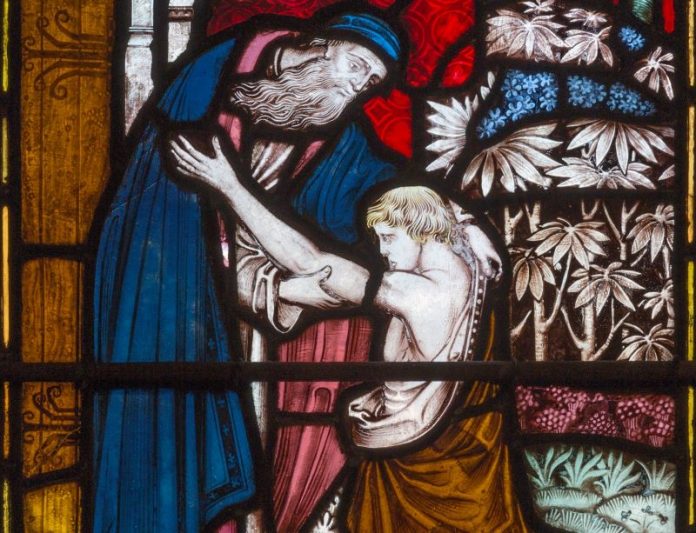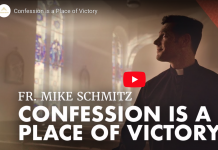
A lesson on confession
LYNN WEHNER
Like the Prodigal Son in the Gospel, we sin, separating ourselves from God. But, like the loving father in the parable, the Lord joyfully welcomes us back into relationship with him and his Church when we repent and seek conversion.
“Sin is before all else an offense against God, a rupture of communion with him. At the same time it damages communion with the Church” (CCC, 1440). To be reunited we need to express sorrow for our sinfulness and ask for forgiveness — and, in her goodness, the Church shows us the way.
We are blessed with a sacrament to receive forgiveness from God for sins we commit after Baptism: the Sacrament of Penance and Reconciliation. “The whole power of the sacrament of Penance consists in restoring us to God’s grace and joining us with him in an intimate friendship” (CCC, 1468). Now this is a message of hope and healing to share with our students!
From the Word
Jesus breathed on the apostles and said, “Receive the holy Spirit. Whose sins you forgive are forgiven them, and whose sins you retain are retained” (John 20:22-23).
Class discussion
■ Why should we go to confession? (to be reconciled with God and the Church after we sin)
■ In plain terms, what is mortal sin? (a serious offense against God and his law that we know is very wrong, but which we freely choose to do anyway)
■ How should we prepare to receive this sacrament? (do a thoughtful examination of conscience, asking ourselves how well we have loved God and neighbor since our last confession)
■ Who can forgive sins? (Catholic priests, through the power of God — see CCC, 1441)
Activities
1. Sin or Mistake. Put out two bowls, labeled sin and mistake, then fill a box with slips of paper on which you’ve written situations where someone did something wrong. Students each choose a paper from the box, read it aloud, and put it into what they think is the appropriate bowl. Discuss choices as a class, focusing on how to discern the difference between simple errors and sinful behaviors.
2. Spiritual Checkup. Go through an examination of conscience appropriate to the age of your students. There are many available! By discussing what is meant by certain sins, students will have a clearer understanding about what it looks like to strive for holiness — and what they need to confess when they fall.
There was a little boy in a class I was preparing to receive the Sacrament of Penance. After much trepidation all year (no matter how we worked and prayed through it), he approached the confessional cautiously, wavering. Before long, he emerged with a broad smile on his face and said to me, “Oh, Mrs. Wehner, I feel like I could fly!”
His joy sprang from the freedom of knowing the forgiveness and new beginning offered to us by our Father in heaven through his priests on earth. This freedom is the gift that awaits each of our students — and all of us who open ourselves to the graces of this beautiful sacrament.
Lynn Wehner is a Catholic writer, editor, speaker, and catechist who lives with her husband and their children in Connecticut.
PHOTO: RENATA SEDMAKOVA/SHUTTERSTOCK




